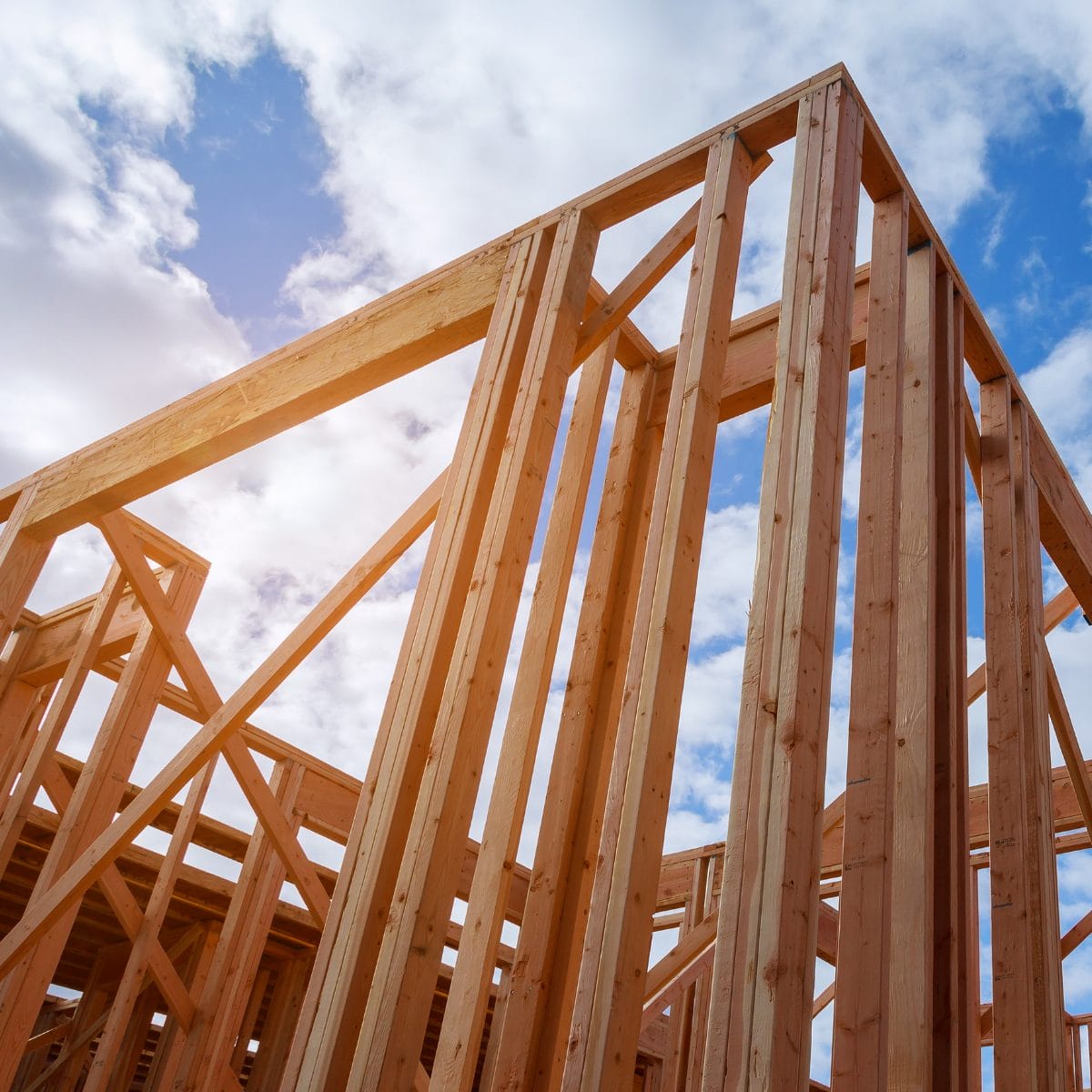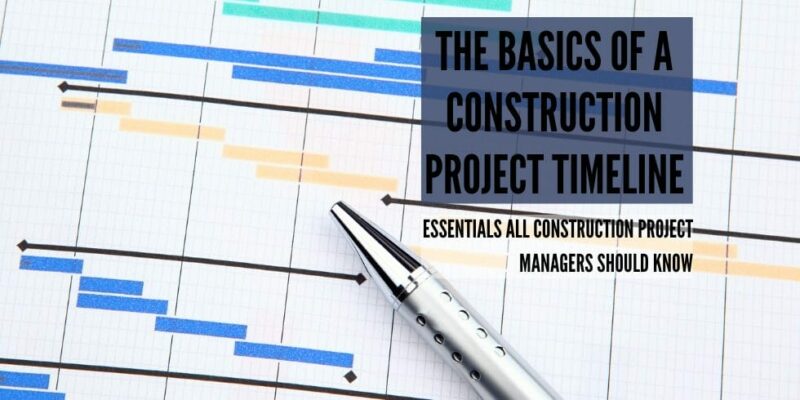Construction projects, whether residential or commercial, are complex and require careful planning and execution. A construction project manager’s most essential tool during this process is a construction schedule that includes the construction timelines for each task.
Including every detail – from maintaining a budget to making sure to secure permits – allows you to follow a realistic schedule without constantly worrying about what you’re forgetting.
In this guide, we will explore the fundamentals of creating a construction timeline to keep your project on track and within budget all the way through to project completion.
Why Create A Construction Timeline?
A construction timeline serves as a roadmap for the entire project. It outlines the major milestones of the project, how long they will take, start and completion date, project deliverables, and more. It also designates the responsible parties and subcontractors involved. Creating a construction project timeline can also make clear any dependent tasks, which helps you to better prepare for possible project delays.
Here are some of the other benefits of having a well-made construction project plan:
Effective Resource Management
A construction timeline helps you allocate resources more efficiently, including labor, materials, and equipment. Adhering to the construction project schedule can prevent overcommitting resources at one stage while underutilizing them at another.
Budget Control
A well-planned timeline allows you to estimate costs more accurately and monitor expenses throughout the project, ensuring you avoid cost overruns and stay within budget.
Risk Mitigation
Identifying potential delays and bottlenecks in your construction schedules in advance enables you to develop contingency plans and mitigate risks, reducing the likelihood of costly delays in the construction schedule.
Better Communication with Stakeholders
A construction timeline acts as a communication tool, keeping all stakeholders on the same page, and informed about project progress, expectations, and potential changes.
Main Components of Construction Timelines
Pre-Construction: Project Scope
During the project scope phase, you’ll lay out the foundation for the timeline. You’ll want to define the following and get any necessary project approvals before you begin hashing out the details of the timeline:
Deliverables
What is expected to be completed by the end of the project? What’s the priority of each of those deliverables?
Roles of Stakeholders
Who needs to be included in the communication of the project’s progress? Who needs to be considered when making critical decisions? This could be anything from design choices to construction scheduling to regulatory decisions. What does the chain of command look like?
Available Resources
The availability of resources can completely shift the direction of the project, so it’s essential to know their status before beginning. Some of the resources that you’ll need during the construction project life cycle are:
- Time frame – when does the building process need to be completed?
- Crew – what workers will be completing the project, and do you have enough?
- Outside contractors – are electricians, plumbers, etc. available when you need them?
- Equipment & tools – is equipment readily available, are there long lead times, or will alternatives need to be brought in or rented?
- Building materials – can you obtain all of the materials you need? Are there any lumber, piping, instruments, or part shortages?
Budget
The project’s budget influences just about every decision made for the entire project. It’s critical to understand the bottom line budget, and how it should be distributed throughout the project.

Construction Project Schedule
While this is likely what one would imagine when thinking about a timeline, it’s important to note that the schedule is just one piece (though an important one!) of the construction timeline.
Environmental and Regulatory Considerations
Before construction begins, you’ll need to be aware of any necessary environmental surveys to assess the impact of the project on the local environment. It is often beneficial to outsource this phase to a reputable environmental compliance and consulting firm.
Additionally, understanding local regulations and obtaining the necessary building permits is crucial to ensure compliance. This phase can vary widely based on the complexity of the project and local regulations. You’ll need to check with the municipality in which the project is located to see which surveys, regulations, and permits are applicable.
Be sure to review the following before proceeding with creating your project timeline:
- Environmental impact
- Anticipated weather conditions
- Local building codes & regulations
- Necessary building permits
- OSHA regulations

Construction Process
The construction phase is where the actual construction work takes place. It can be broken down into several key stages, each with multiple tasks and its own timeline and cost implications:
Step 1: Site Preparation and Foundation
This stage involves clearing the construction site and laying the foundation. The timeline and cost depend on factors like soil conditions and the complexity of the foundation. Your milestones might be:
- Soil/Bore Testing
- Excavation
- Foundation
Step 2: Framing or Pre-Cast Walls
There isn’t much explaining to do for this phase, but it takes some time and literally lays the framework and basic structure for the rest of your project. Pre-cast may be considered as an alternative.

Step 3: Utilities & Essentials
Once the foundation is laid, essentials and utilities can be installed. This includes:
- Framing
- Electrical
- Plumbing
- HVAC
- Insulation
- Masonry
Step 4: Interior
Now that your project is coming together, it’s time for the interior finishes and details (if your project has an interior). This is typically done in three project phases.
Phase 1
- Drywall or prefab installation
- Doors and windows
Phase 2
- Flooring
- Carpentry
- Painting
- Tiling
- Molding
- Detailed trim
- Fixtures
Phase 3
- Equipment Install
- Piping
- Instrument Install
- Programming
- Commissioning
- Site Acceptance Test
- Saleable Product
Step 5: Exterior
The final step of the construction phase is the exterior. Your project’s exterior may need things like:
- Pavement
- Landscaping
- Fencing
- Exterior finishes
- Exterior lighting
Monitoring and Adjustments
Throughout the project, it’s crucial to monitor each step, track progress, identify potential delays, and make adjustments as necessary. This includes addressing unexpected issues, managing change orders, and navigating the distribution of the project budget.
Tailoring Your Timeline
Construction timelines are not one-size-fits-all; they should be tailored to the specific project’s requirements. Factors like project size and complexity, location, and environmental considerations can significantly impact both the timeline and budget.
By customizing your timeline to your project’s unique demands, you improve your chances of delivering a successful construction project on time and on budget.
Construction Project Management Companies
A well-structured construction project timeline is the backbone of a successful construction project. But sometimes, internal resources aren’t available to create the timeline itself.
Construction project management can be outsourced to companies such as EMDS that specialize in the management of projects in the construction industry. If you go this route, be sure the company is well-versed in local regulations, OSHA regulations, and has demonstrated experience in projects like yours.

